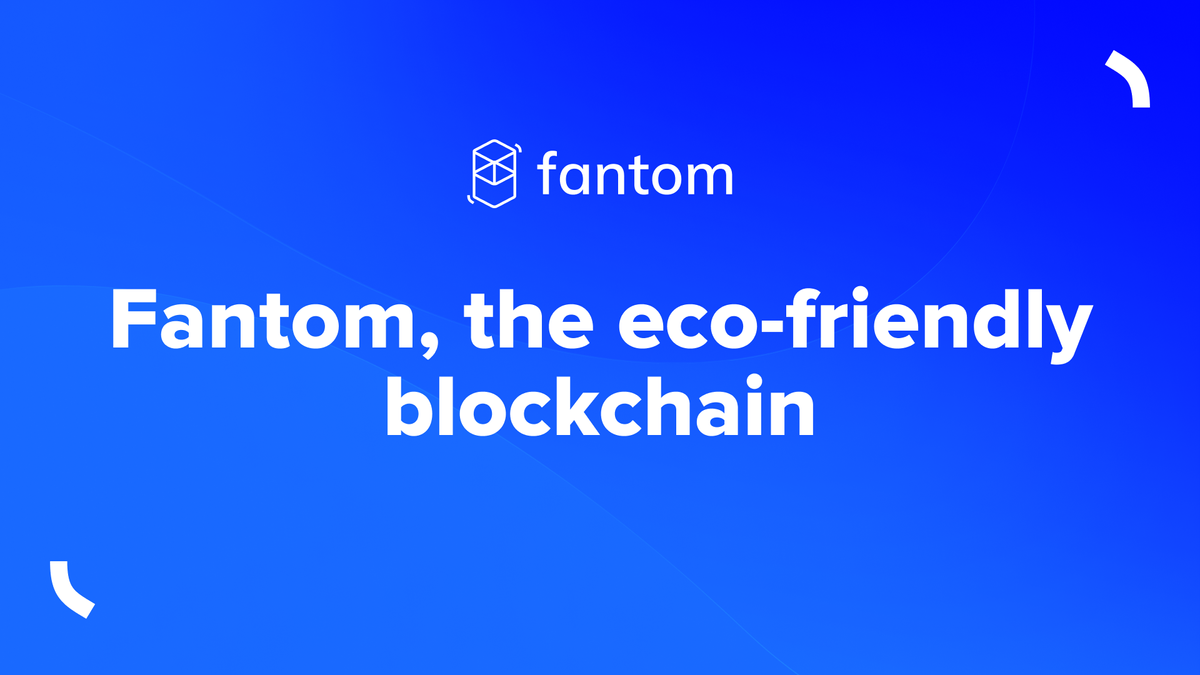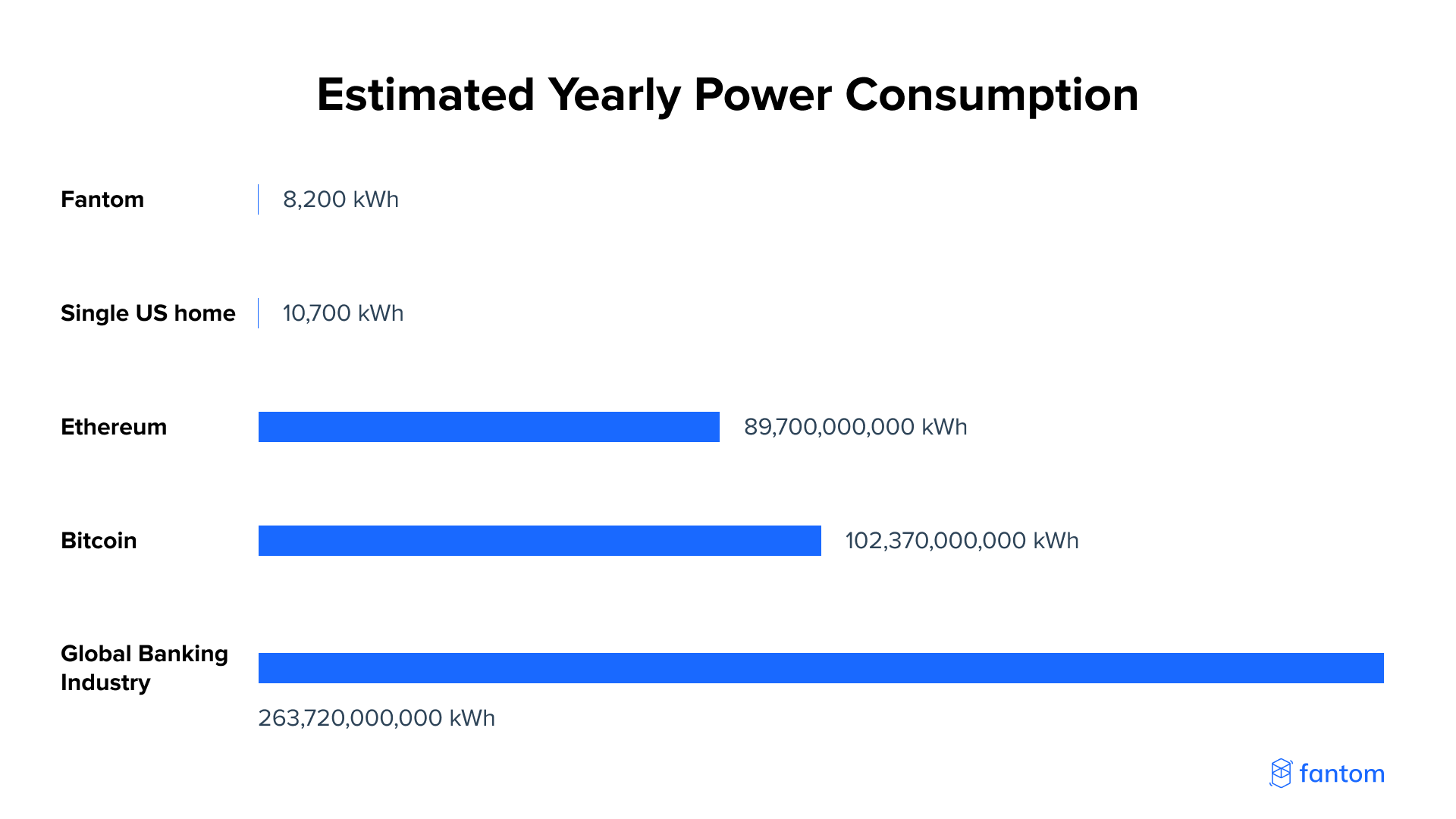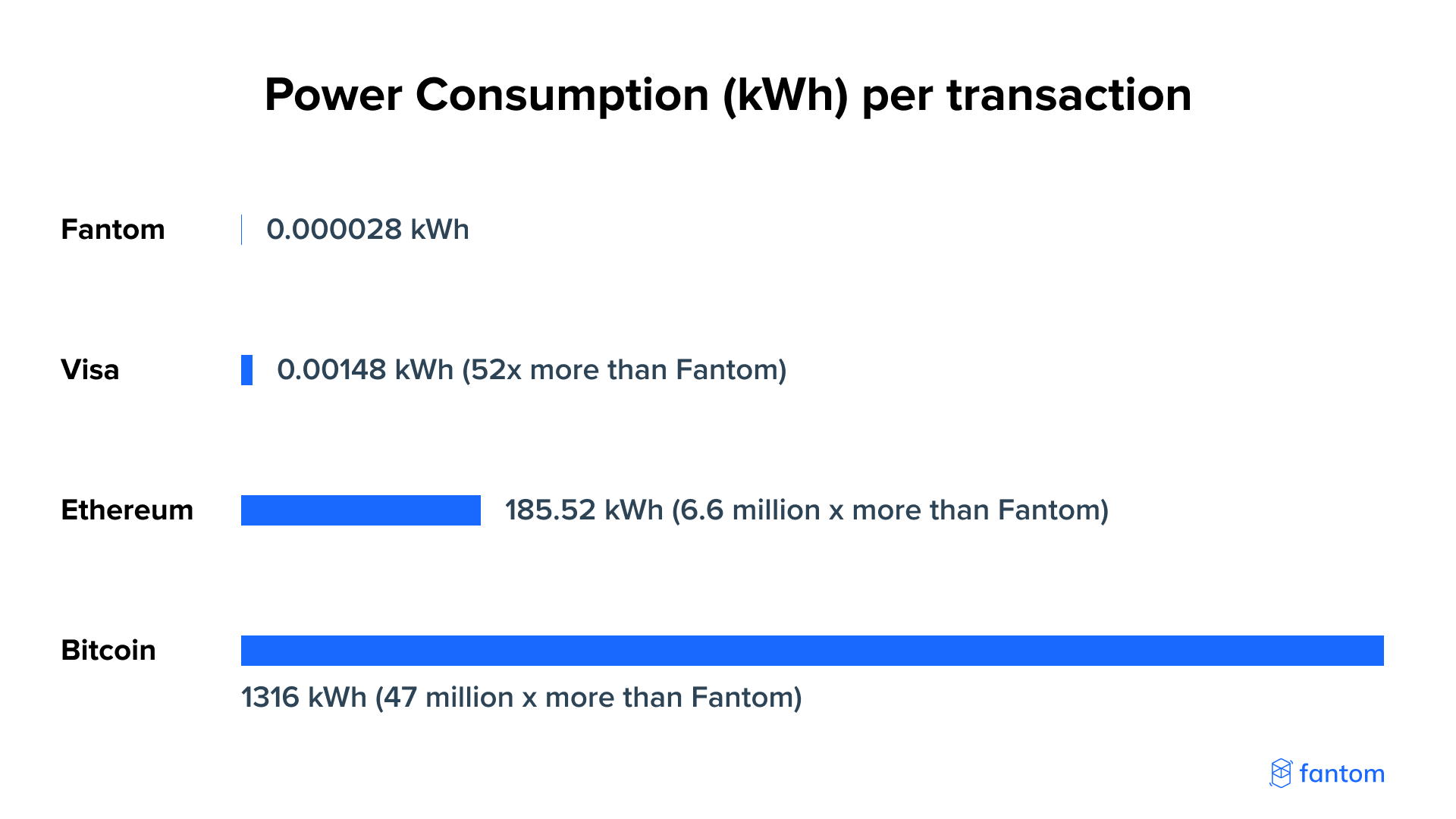Fantom, the eco-friendly blockchain

Since its inception, the Fantom Foundation has focused on the long-term sustainability of the network. Implementing Proof-of-Stake consensus backed by a novel aBFT algorithm allows optimal speed, security, and low resource consumption.
Fantom’s fast transaction times and efficient event-handling translate into a high energy-saving network.
Fantom's low energy impact
Basing our calculations on the recommended validator node setup and the current validator nodes count, each transaction on the Fantom network consumes between 0.000024-0.000028 kWh of energy.
We assume an average transaction rate of 700,000 txn/day, and draw on the best available information on the energy demands and PuE (Power Usage Effectiveness) of Amazon data warehouses.
If we increase the validator count to 200, with all other estimates remaining constant, we expect that the network would consume approximately 0.00009 kWh per transaction.
For any assumptions that we make — the energy consumed by servers, for instance — we use higher rather than lower ranges, keeping our numbers conservative.
In short, we set a high bar for being eco-friendly.
For the purposes of illustration, 0.000028 kWh is the equivalent of turning on one 100W bulb for approximately one second.
Put another way, assuming current levels of network traffic, the entire Fantom network consumes just 8,200kWh of energy per year; this is less than the average total yearly electricity consumption of a single US home, which is around 10,700 kWh.

Taking the upper bound of Fantom’s energy consumption per transaction, we observe that:
- The Visa Network consumes 52x as much energy (0.00148 kWh per transaction);
- Ethereum consumes approximately 6.6 million times more energy per transaction (185.52 kWh per transaction); and
- At the current hash rate, Bitcoin consumes an astounding 25.1- 68.9 million times as many kilowatt-hours per transaction (the estimated range for BTC is 704-1928.83 kWh per transaction).

Putting things in perspective
Zooming out, we can see that the estimated yearly consumption of the Ethereum network is about 90tWh. Taking this number and data about Ethereum network traffic, we calculate that the Fantom network would, at Ethereum’s scale, consume just 12,854 kWh annually. This is to say that Ethereum consumes 7 million times more energy — 700 Million percent — more power.
If Fantom were to handle 10 times Ethereum’s current yearly traffic, total consumption on the Fantom network would be around 128,542 kWh (128.54 MWh). This is still far less than Ethereum’s consumption at current levels by a factor of 700,000.
Returning to our estimate of power consumption at 200 validators, we forecast that under Ethereum’s current load, power consumption on the Fantom network would be about 40,200 kWh, still about 2.2 million times less than Ethereum.
Built for eco-sustainability
As the developer of a public chain, Fantom embraces the responsibility to provide the greenest, safest and best technologies to its population of users. Advances in technology go hand in hand with increasing sustainability, and we view it as imperative to offer energy-efficient solutions and account for network power demands.
We continue to devote significant resources to the research and development of protocol upgrades to further optimize the network. These efforts yielded the major Go Opera update implemented in April 2021, and we expect that there will be more to come as we push for higher levels of efficiency and eco-sustainability.
Sources:



